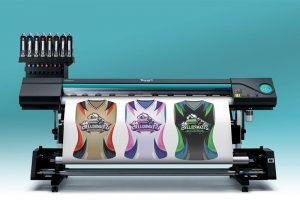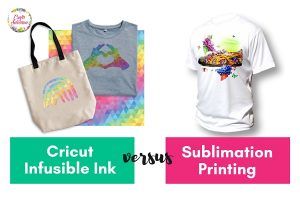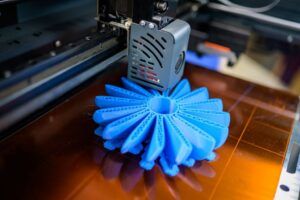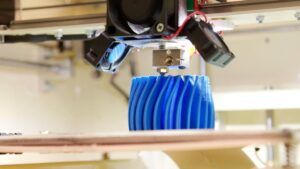You must have come across some t-shirts that either leaves you with an expression “wow”! This looks nice or “wow”! What a magnificent design. Such differences in the expressions could only be a function of the choice of printing adopted by the designer.
There are different printing methods used in the garment industry – the common ones include screen printing and heat transfer printing. But how can you determine which printing method is best for your business or your current printing project?
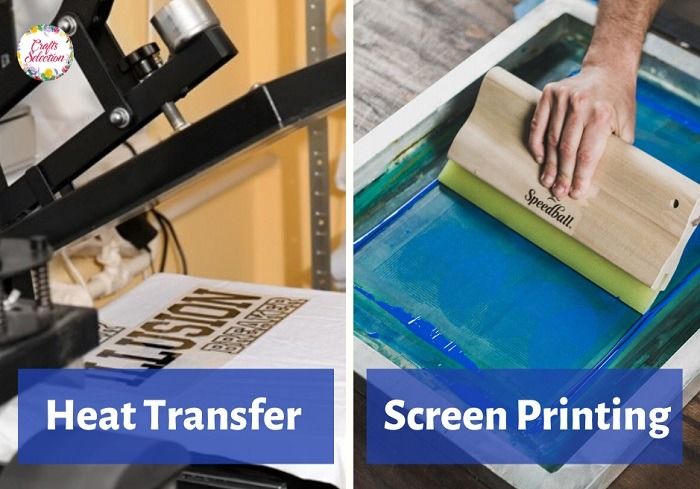
In this post, we will compare heat transfer printing versus screen printing with the emphasis on what both means.
We will also take a close look at their differences, processes involved, pros and cons, cost, time requirements, and of course, the profit margin you should expect to help you determine which garment printing method is right for you.
Now, let’s get down to business.
What is Screen Printing


Screen printing refers to the use of a nylon mesh or screen, on which an ink-blocking stencil is created, and ink is applied to bring out the desired design on t-shirts.
It is an age-long technique printing method, and it’s mostly suitable for designing very large quantities of fabrics.
Pros
- Designs created with screen printing are long-lasting on the fabrics as it does not wear out easily as a result of regular laundry either by hand or the washing machine.
- Another beauty of screen printing is that it brings out the quality of the ink on the design in terms of the thickness and soft-feels on the hand.
- It is cost-effective for large orders or projects (500 units and more).
- Does not require heat, so it is good for substrates that cannot withstand the heat of transfer.
- A reasonable slight error in the process usually turns out to add more beauty to the design.
- It is the best choice of printing method for balloons, posters and handouts, textiles, aprons, and hats.
Cons
- Screens are limited in size; hence, they are not suitable for printing large designs, especially on large substrates.
- The processes involved are tedious for a beginner as major mistakes are unavoidable. And the process of trial and error on other shirts before the actual shirt to be designed would have gulped a lot of materials thereby leading to wastage.
- Screen printing doesn’t work for all designs.
- Much space is needed to accommodate the movement of screens from one end to another and avoid color mix up.
- Not suitable for small orders, especially under 500 units.
- It is time-consuming, especially when working on complex or multi-colored designs.
What is Heat Transfer Printing


Heat transfer printing involves the use of heat to transfer custom designs from heat-applied materials to fabrics or other substrates with the aid of a hot-pressing iron or a heat press machine.
The heat press machine applies heat and pressure on the transfer material and the garment for a specific period to transfer the design to the garment.
For more information, please refer to our heat transfer basics guide.
Pros
- Heat press machines are produced in different sizes, so it can conveniently be used to print large designs on large substrates.
- It requires less space and is environmentally friendly.
- It can be used to design any substrates irrespective of the shape.
- A single heat press machine can be reused many times and for multiple colors without the stress of having to wash screens from time to time.
- Good for beginners with small printing projects or professionals for printing designs involving multiple colors.
- Can make photo-quality prints
Cons
- The slightest error in its application is capable enough to cause damage to the entire design and fabrics.
- Designs made through this method can easily wear out due to regular laundry.
Screen Printing vs. Heat Transfer Printing
Now that you have the idea of what screen printing and heat transfer printing means, we are going to compare the two printing methods in a few important areas.
Screen Printing Processes
With screen printing, you’ll cut the screen to create an ink-blocking stencil for your design. Then, you’ll place the garment you want to design on a flat surface, place the screen on it and spread a thick cream of screen-printing ink over the screen using a squeegee. The ink passes through the screen to the garment only in the areas you want it to be.
After the printing process, you have to put the garment in the drier for a few minutes or in the dark and turn on the fan to perfect the printing.
With this printing method, you can only use a color per screen – so if you’re printing different colors in your design, you may need to use multiple screens to produce your final design.
Heat Transfer Printing Process
Heat transfer printing process can be carried out at home or in the office within a few seconds as long as you have the basic materials needed.
This printing method works by creating your custom designs on a heat-applied material and applying heat and pressure using a heat press or a hot iron to transfer the designs to your garment.
There are different forms of heat transfer – each with their unique printing processes. Please read our heat transfer basics for more information.
Materials
For quality screen printing output, the materials needed range from the screen, squeegee, tape, films, and scrubbers to printers, plastisol ink, and water. These materials are not expensive. However, you have to invest in a quality screen-printer.



On the other hand, heat transfer printing method requires heat press machine, heat pads, heat tape, heat resistant sheet, heat transfer material paper.
You can outsource your heat transfer paper material or design it by yourself with a computer, print it with either an inkjet or laser printer, and cut out the design using a cutting mat, and a craft knife or with a vinyl cutter. Heat transfer printing materials are also not expensive.
However, you’ll have to invest in a quality printer and heat press machine.
Cost-Effectiveness
Screen printing is cost-effective when it comes to printing a large volume of fabrics (about 500 units and more). However, it is not advisable to use this method when a small printing project is involved.
Although screens are reusable, they are expensive to produce. That is the main reason why screen printing is not cost-effective for small projects. The cost of screen printing stays the same – so it will cost more to produce fewer units.
If you’re, however printing a large number of garments, you can spread the cost of printing among each garments being printed to lowers the printing cost.
Screen printing is also unsuitable for multi-colored designs as the more the colors you need to print, the more the number of screens that will be required.
Remember, you can only use a color per screen, so you may have to create more screens for different colors – this will definitely cost you more.
Heat transfer printing, on the other hand, is considered cost-effective for small projects but not for large projects. That is because the cost of heat transfer materials (such as transfer papers, ink, and vinyl) essentially remains the same.
Also, the materials used on a garment cannot be reused on another (with the exception of the transfer papers as they are reusable if you’re using the digital heat transfer printing method).
Time
Screen printing is time-consuming when design with multiple colors is involved. You have to prepare individual screens for each color – a process which takes time.
But once you prepare the screens, the printing will be completed within a short period. An attempt to use one screen for multiple colors printing will lead to more time consuming as a result of the process of cleaning up one screen to reuse for other colors.
Heat printing, on the other hand, is less time-consuming. With this printing method, you can design garments with multiple colors, even within a few seconds. That makes them more suitable for emergency projects.
However, this printing method is not time efficient when it comes to printing a large number of units. That is because the time required to transfer the design from the heat applied material stays the same, so if you are printing in bulk, say five hundred or more units, you will find this method too time-consuming.
Profit Margin
Screen printing is mostly recommended for professionals with a large volume of printing projects as it yields a huge profit turn over.
On the other hand, heat printing is more suitable for beginners or designers with a small volume of printing projects, and it also guarantees a good profit turn over.
Conclusion
It is far beyond doubt that the right choice of printing method largely depends on numerous factors which must be duly considered as the benefits of a method is equivalent to snags of another.
Hence, to make the right choice, it is advisable to consider the volume of the project at hand (small or large), the type of design (single color design or multi-color design), time, profit expectation and quality turn out.
However, we recommend screen printing for large printing orders, say 500 or more units and heat transfer printing if you’re dealing with small orders or looking to create multi-colored designs.
